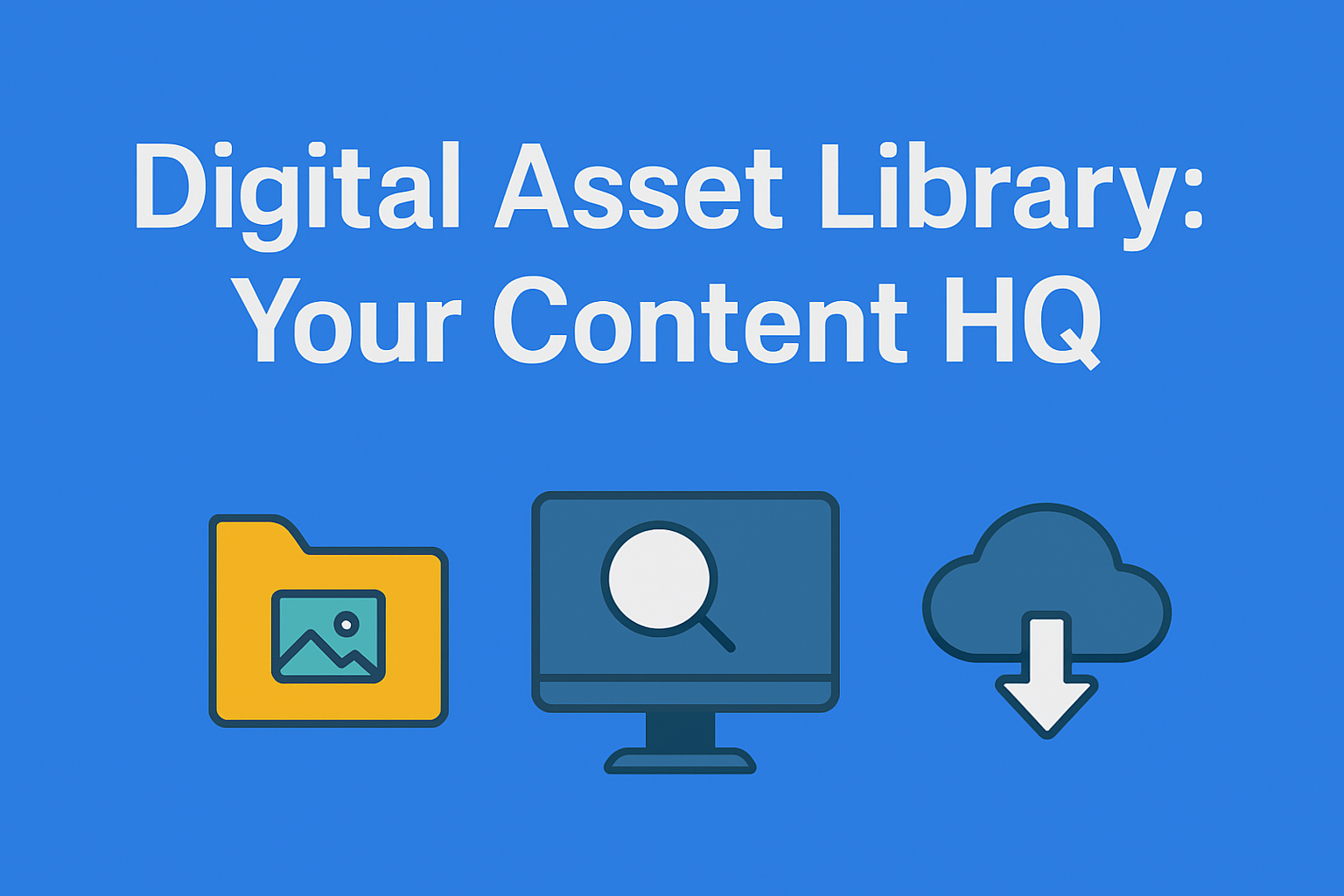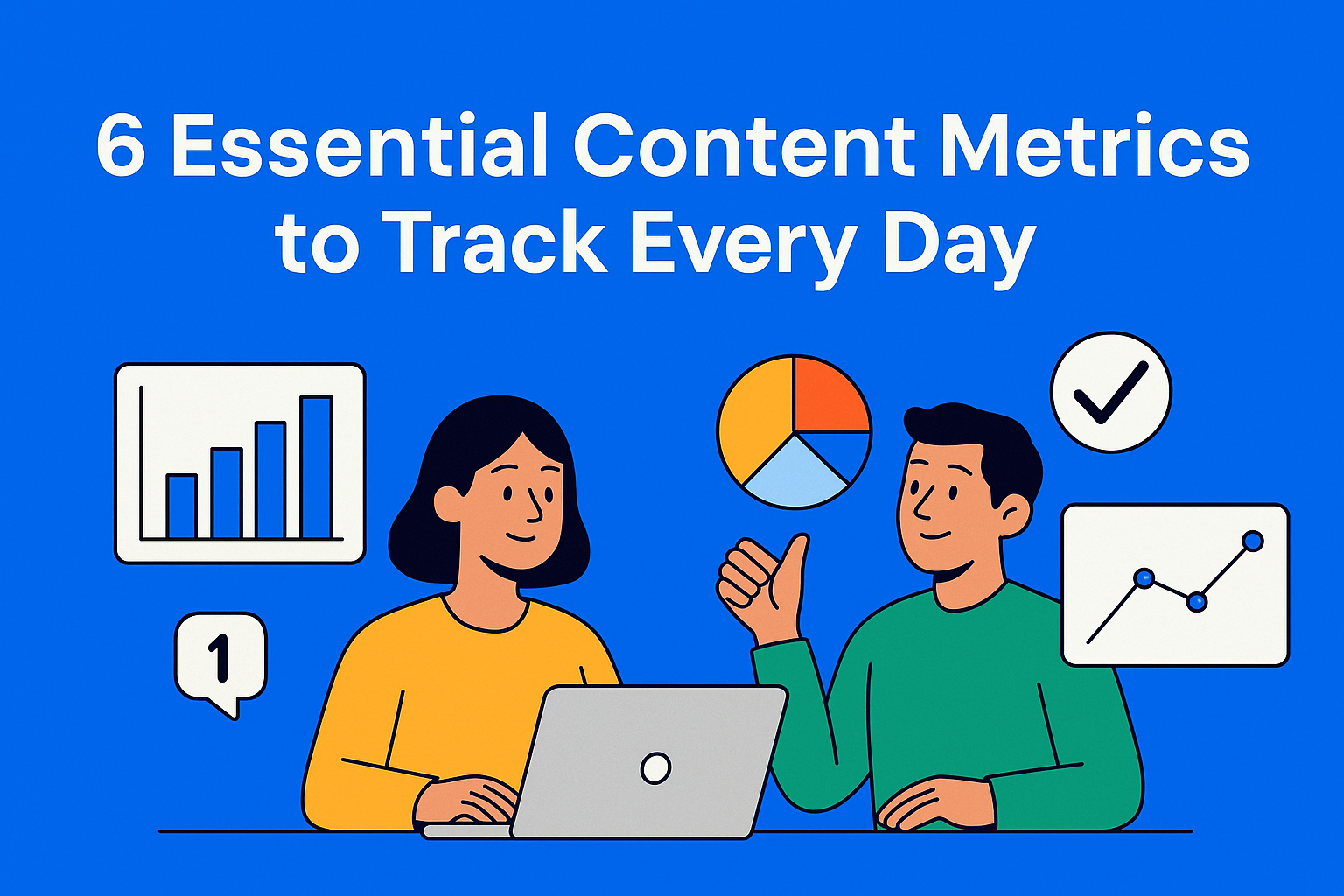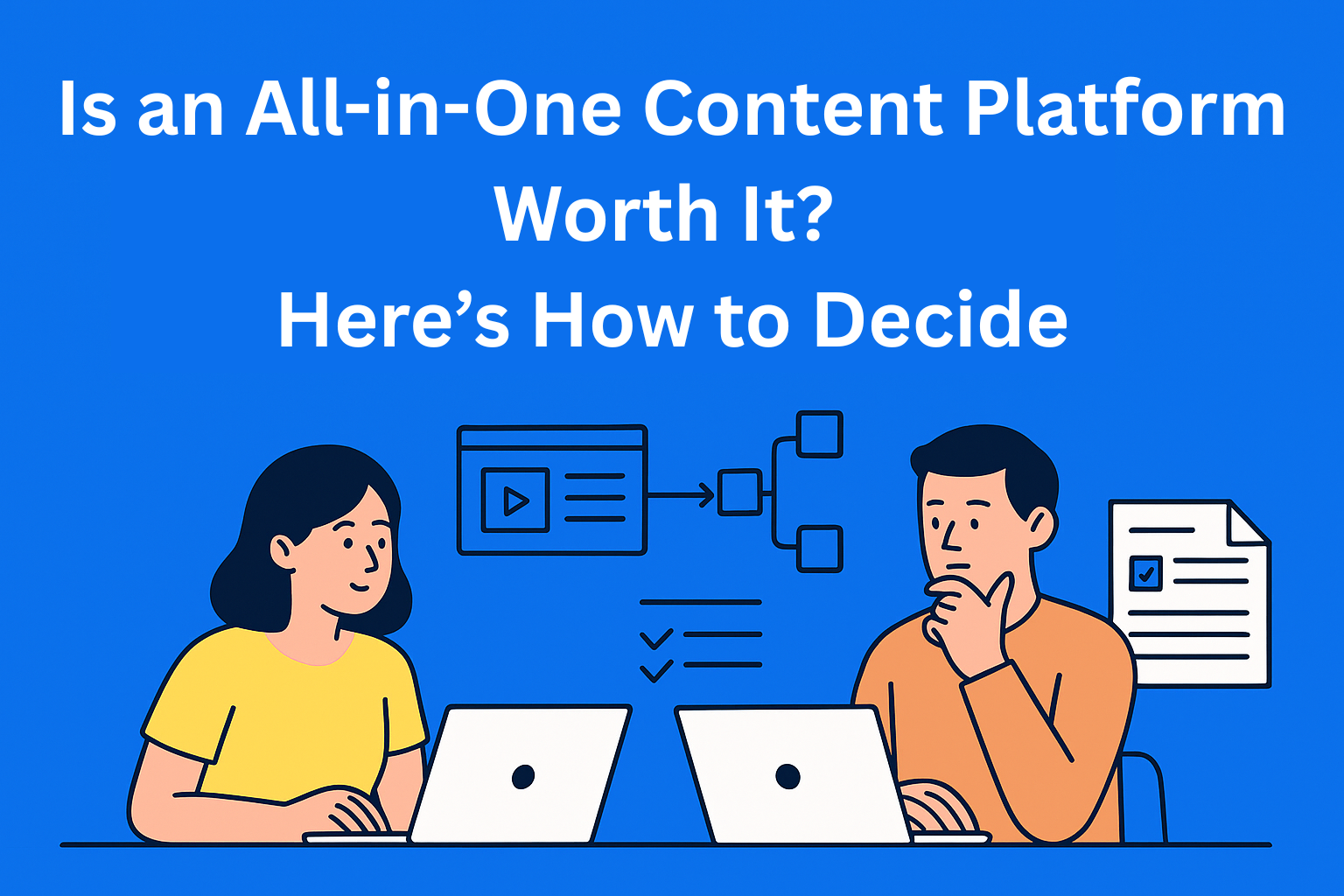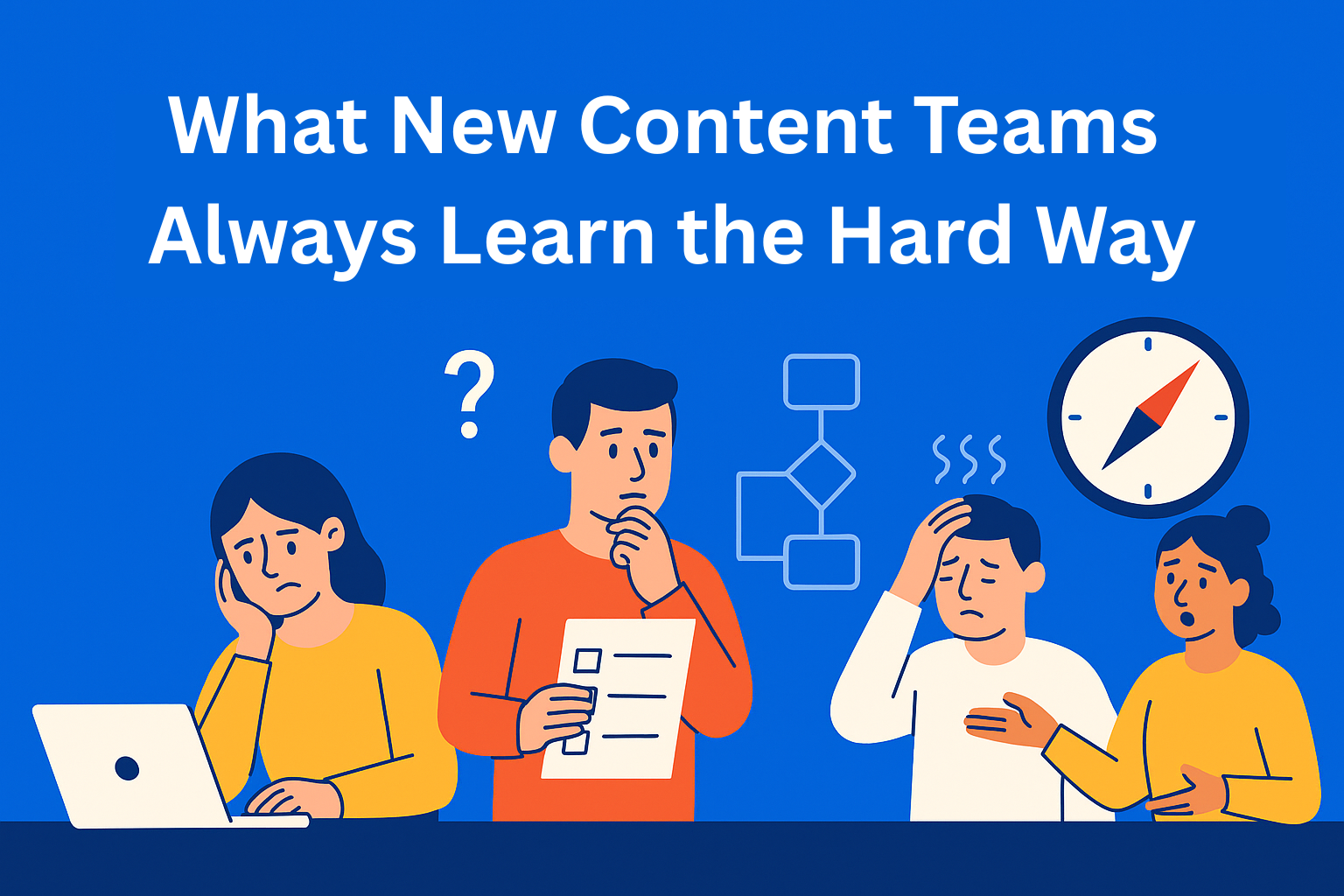How to Choose the Right Digital Asset Library for Your Content Team
Still digging through chaos folders to find “FINAL_final_v4”? It’s time to get serious about your content workflow. Discover how a digital asset library can help your team stay organized, collaborative, and slightly less stressed. No more digital scavenger hunts.

Does this sound familiar? You’re going through 25 browser tabs, a Slack thread, and a spreadsheet named something horrifying like “FINAL_final_approved-v4_UPDATED”, just to find that one image your designer swore was uploaded last week.
Welcome to the content hell. But there’s a way out. Enter: the digital asset library (DAL). It’s your team’s central HQ for logos, videos, copy blocks, memes you might regret, and everything in between. Think of it as the digital version of that one coworker who always knows where stuff is, if only they didn’t take PTO.
Now, let’s figure out how to pick the right DAL for your content team without pulling a muscle.
Key Takeaways
- Understand your team’s habits before buying - If your files live in chaos, mapping workflows first is non-negotiable.
- Search, tags, metadata, and version control are must-haves - Don’t settle for basic storage disguised as a DAL.
- Think long term: scalability and cloud-based wins - A good DAL should grow with your team and stay reliable at scale.
- Collaboration features are a game-changer - Real-time feedback, roles, and approval workflows are essential.
- Cheap tools often cost more in the long run - Budget for training, onboarding, and support - not just licenses.
- Test before you commit - Always request trials or sandbox environments to see how the system performs under pressure.
- EasyContent bridges asset and content workflows - Centralize asset management inside your editorial process.
- Your DAL should reduce digital scavenger hunts - If it’s harder than Dropbox + Slack + hope, you chose wrong.
1. Know Thy Team (And Their Bad Habits)
Before you even glance at software demos, take a beat. Ask yourself: what does your team actually need? Are you a lean startup squad uploading one GIF per week, or a bustling enterprise pumping out social campaigns like a content machine?
Map out your workflows. Do you run everything through Notion, Trello, or a slightly chaotic Google Sheet of doom? Do your assets live on Google Drive, Dropbox, or worse, Bob’s personal folder labeled "STUFF"?
Here’s a trick: write down every time someone asks, “Where’s that file?” in a week. If the answer includes the words “I think…” you need a DAL. Bottom line? You’re overdue for a real content management system that doesn’t rely on guesswork and ancient folder hierarchies.
2. Non-Negotiables: What Your DAL Absolutely Needs
Okay, let’s talk features. This isn't the most fun part, but it's super important.
You want a search function that does the job. A solid tagging system, customizable metadata, and for the love of all that’s organized, version control. Because nothing kills productivity faster than working off last year’s brand guide.
User roles? Essential. Sarah from marketing doesn’t need access to development files, and Dave from legal should never be allowed near the meme folder.
Also, integrations matter. Can it play nice with your CMS? Your project management tool? A little shoutout to EasyContent here, it links your content production with asset management so your team isn’t playing digital fetch all day. That’s the magic of reliable digital asset management software, it makes your stack actually feel... stacked.
3. Thinking Ahead: Scalability & Storage
Now, let’s future-proof this thing. Sure, your team is small now, but next quarter? You could be onboarding three new writers and launching an entirely new brand vertical.
Ask yourself: Can this DAL grow with you? Is it cloud-based (translation: fewer headaches and emergency IT tickets)? Does it have redundant backups? Because the last thing you want is your entire Q4 campaign disappearing.
Pro tip: If the platform’s storage tiers feel like mobile data plans from 2009, move along. The right scalable asset library should flex and stretch without breaking a sweat.
4. Teamwork Makes the Dream Work (Unless Your Tools Suck)
Collaboration is more than a buzzword. It’s what keeps your team from yelling across Zoom calls and accidentally overwriting each other’s work.
You want a DAL that supports real-time feedback, commenting, and approval workflows. Imagine being able to say, “Hey, can someone approve this?” and actually getting an approval, not a week-long silent treatment.
This is where EasyContent really shines. It plugs into your workflow so editors, writers, and designers aren’t working in different universes. It’s like Google Docs for your assets, minus the formatting disasters. If your platform lacks collaborative content tools, you’re basically handing your team paper airplanes instead of walkie-talkies.
5. Budget: The Awkward Conversation
Let’s get real: budget is always the elephant in the conference room. And while it’s tempting to cheap out, a bad DAL will cost you more in lost time, missing files, and therapy sessions.
Look at licensing models, some charge per user, some by storage. Beware the hidden costs: training, onboarding, and the emotional toll of switching systems six months in. Make sure support is actually helpful, not just a chatbot that ghosts you.
Remember, investing in the right (quality) tool saves money long-term. A solid DAL boosts your content workflow efficiency, so your team can do more actual creating and less digital scavenger hunting.
6. The Vendor Vetting Gauntlet
Demo everything. Seriously. Vendors will promise you the moon, make sure they deliver at least the sky.
Request a sandbox or trial. Drag in your own assets, try to break things, get your team to test it. If it takes three hours to upload a ZIP file, it’s a red flag.
Check support quality, documentation, and whether their salespeople sound like they’ve used the product themselves. Bonus points if they actually listen to your use case instead of launching into a pitch deck from 2017. That’s how you separate the wannabes from the best digital asset library options out there.
Final Thoughts: Choose Smart, Not Fast
Your digital asset library should feel like a partner, not a puzzle. The right one will make your content process smoother, your team happier, and your deadlines slightly less terrifying.
Start small. Try a pilot with a DAL that looks like it checks all the boxes and test it with one campaign. Watch what works. Tweak what doesn’t. And most importantly, don’t forget to periodically reassess. What works for you now might not cut it a year from now.
Or as your future self might say: “Thank you, past me, for not leaving everything in a shared folder named ‘dump'”. Choosing the right digital content library tools is one of those grown-up decisions that future-you will absolutely high-five you for.
Now go forth and organize!






